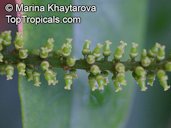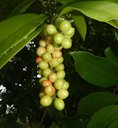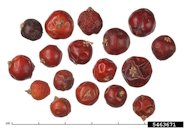| Bignay - Antidesma bunius | |||||||||||||||||||||||||||||||||||||||||||||||||||||||||||
|---|---|---|---|---|---|---|---|---|---|---|---|---|---|---|---|---|---|---|---|---|---|---|---|---|---|---|---|---|---|---|---|---|---|---|---|---|---|---|---|---|---|---|---|---|---|---|---|---|---|---|---|---|---|---|---|---|---|---|---|
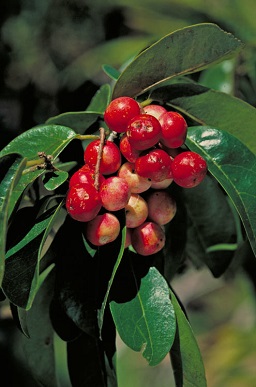 Fig. 1 Antidesma bunius, bignay 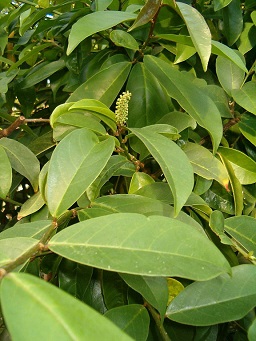 Fig. 2  A. bunius, leaves and fruits, Botanical Gardens Berlin 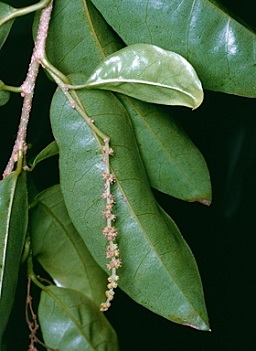 Fig. 6 A. bunius, Russel Costin's Nursery, Chillingham, NSW  Fig. 7  Fig. 8  A. bunius (currant tree, bignay, nao luang) close up 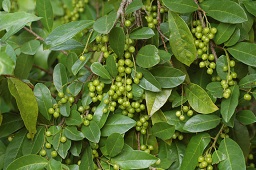 Fig. 9  A. bunius, Mt Annan Botanic Gardens, NSW (immature fruit) 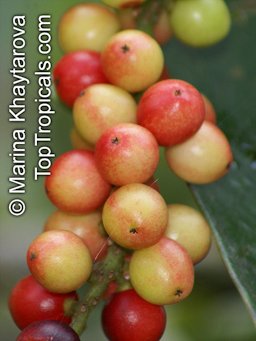 Fig. 12 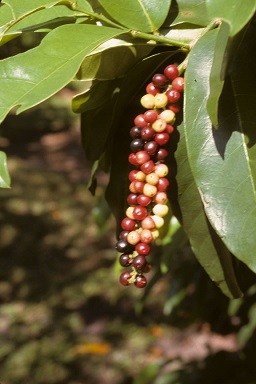 Fig. 13  A. bunius, USA, Florida, Coconut Grove, National Tropical Botanical Garden, The Kampong 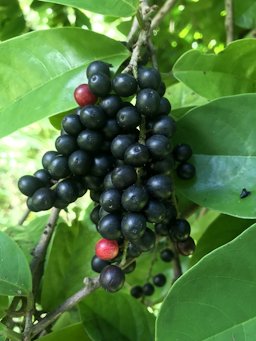 Fig. 14 Salamander-tree A. bunius, Deering Estate, Palmetto Bay, FL, US 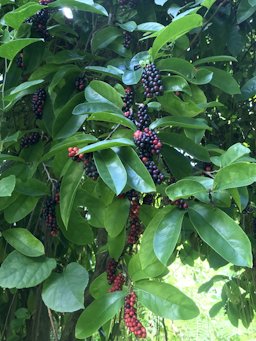 Fig. 15  Salamander-tree A. bunius, Deering Estate, Palmetto Bay, FL, US 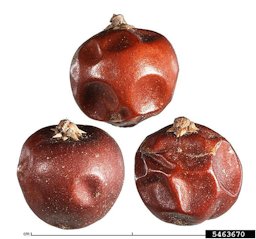 Fig. 16  Bignay (A. bunius) fruit(s) 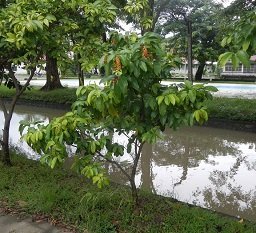 Fig. 20   Fig. 21  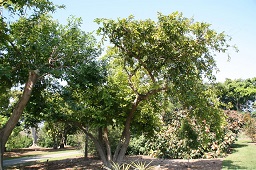 Fig. 22  A. bunius (L.) Spreng. Fairchild Tropical Botanic Garden, Miami, FL USA  Fig. 23  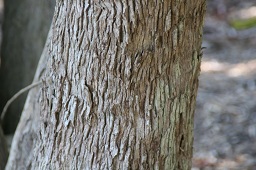 Fig. 24  Fig. 25  Bignay (A. bunius) fruits used in wine as part of tropical fruit display GrowFest! 2013 at Fruit & Spice Park in the Redland | Scientific
name Antidesma bunius Spreng. Common names English: bignay, bignay China-laurel, Chinese-laurel, currant-tree, Herbert River-cherry, Queensland-cherry, salamander-tree, wild cherry; Dutch: salamanderboom, woeni; French: antidesme; German: Lorbeerblättriger Flachsbaum, Salamanderbaum; Spanish: bignai 1 Other Common Names Synonyms A. andamanicum Hook.f.; A. bunius var. bunius; A. bunius var. cordifolium (C.Presl) Müll.Arg.; A. bunius var. floribundum (Tul.) Müll.Arg.; A. bunius var. pubescens Petra Hoffm.; A. bunius var. sylvestre (Lam.) Müll.Arg.; A. bunius var. wallichii Müll.Arg.; A. ciliatum C.Presl; A. collettii Craib; A. cordifolium C.Presl; A. crassifolium (Elmer) Merr.; A. floribundum Tul.; A. glabrum Tul.; A. rumphii Tul.; A. stilago Poir.; A. sylvestre Lam.; A. thorelianum Gagnep.; Sapium crassifolium Elmer; Stilago bunius L. 2 Relatives The black currant tree (A. ghaesembilla), The Herbert River cherry (A. dallachyanum) 3 Family Euphorbiaceae (spurge family) Origin India, southeast Asia and northern Australia 8 USDA hardiness zones 10-12 18 Uses Fruit and leaves edible; ornamental 7 Height 10-33 ft (3-10 m) up to 99 ft (30 m) 6 Spread Wide-spreading branches forming a dense crown 4 Plant habit May be short and shrubby or tall and erect 8 Growth rate Moderate 10 Trunk/bark/branches Straight trunk; yellow brown bark; usually branched near the base; often fluted or with buttresses (Fig. 23) 6,12,16 Leaves Evergreen; alternate; oblong; pointed; dark-green, glossy, leathery; very short petioles 4 Flowers Tiny; odorous; reddish; male and female on separate trees; male in axillary or terminal spikes; the female in terminal racemes 3-7.9 in. (7.5-20 cm long) 4 Fruit Globose or ovoid drupe; yellowish-red to bluish-violet and juicy; borne in grape-like pendent clusters (often paired) 4,6 Season In Florida it extends from late summer through fall/winter because some trees bloom much later than others 3 Light requirement Light shade to very bright 6 Soil tolerances Generally grows well on most types of soils; in alkaline soil, some minor element deficiencies might occur but this can be corrected with nutritional sprays 12 pH preference Optimal 6-7; absolute 5.5-8 6 Drought tolerance Drought tolerant when established 12 Aerosol salt tolerance Low 10 Soil salt tolerance Low 10 Cold tolerance Hardy to 27 °F (-2.8 °C); tolerates light frost 11 Plant spacing 40-45 ft (12-14 m) apart, each way 3 Invasive potential * None reported Pest/disease resistance Leaves may be heavily attacked by mealybugs and by scale insects; sooty mold develops on their excretions 3 Known hazard The tree’s roots are poisonous and should not be consumed; the bark contains a toxic alkaloid 3,16 Reading Material The Antidesma (Antidesma bunius), Fairchild Tropical Botanic Garden Bignay, Fruits of Warm Climates Antidesma bunius, Agroforestry Database The Bignay, Tropical Fruit News, RFCI Antidesma bunius, PROSEA Foundation Origin and distribution Antidesma bunius is found wild in the wetter parts of India, from the Himalaya southwards and eastwards, in Sri Lanka, Burma and Malaysia. It may not be native in the Philippines and Peninsular Malaysia, but if so it must have been introduced in prehistoric times and have become widely naturalized, at least in the Philippines. Bignay is cultivated extensively in many parts of Indonesia, particularly in Java and also in Indo-China. In Malaysia and the Philippines the tree is rarely seen in cultivation. 5 Ecology Bignay is not a strictly tropical tree, for it grows and fruits in central Florida. In the tropics it is found from sea level to elevations of more than 1000 m. In Indonesia it is grown in the monsoon climate of the eastern provinces as well as in the humid western parts, but its distribution in India suggests that it is not by any means drought-tolerant. The tree is common in the early stages of secondary forest succession, invading marginal grassland. However, it attains optimum growth on well-drained clay loams under partial shade. 5 Description Bignay is an attractive, undemanding, evergreen, ornamental plant. Occasionally a shrub, it is more commonly a tree that can grow up to 99 ft (30 meters) tall, though is usually smaller. In larger specimens the bole (trunk) can be up to 3.3 ft (1 meter) in diameter and unbranched for 33 ft (10 meters). It is usually straight, but is often fluted or with buttresses that can be up to 3 meters tall. 12 Habitat Wet evergreen forest, dipterocarp forest and teak forest; on river banks, at forest edges, along roadsides; in bamboo thickets; in semi-cultivated and cultivated areas; in shady or open habitats; usually in secondary but also in primary vegetation. 12 Leaves It has large oval shaped leathery evergreen leaves up to about 8 in. (20 cm) long and seven wide. They are attached to the twigs of the tree with short petioles (Fig. 5), creating a dense canopy. 8
Flowers The species is dioecious, with male and female flowers growing on separate trees. The flowers have a strong, somewhat unpleasant scent. The staminate flowers are arranged in small bunches and the pistillate flowers grow on long racemes which will become the long strands of fruit. 8
Fig. 11. A. bunius observed in Hong Kong Fruit Fruits round or ovoid, up to 0.3 in. (8 mm) across, borne in grape-like pendent clusters (often paired) and which are extremely showy because the berries ripen unevenly. Skin thin and tough but yields an abundance of bright-red juice which leaves a purple stain on fabrics, while the pulp, only 0.1 in. (3 mm) thick, is white with colorless juice. Whole fruits very acid, much like cranberries, when unripe, sub-acid and slightly sweet when fully ripe. Some tasters detect a bitter or unpleasant aftertaste, unnoticeable to others. 4 The fruit is very similar to seagrape fruit clusters, only smaller. 12 There is a single, straw-colored, ridged or fluted very hard seed, 1.2 in. (3cm) long, 0.2 in. (6 mm) wide. 4 Bignays also freeze exceptionally well—place individual ripe fruits a freezer bag, mark the batching date, and enjoy for up to a year. 16
Harvesting Yield varies greatly from tree to tree if they are grown from seed. A mature tree in Florida has produced 15 bushels of fruit in a season. One very old tree at the home of Dr. David Fairchild produced 22 bushels yielding 72 gals (273 liters) of juice. 3 The fruit bunches are harvested by hand with the help of a bamboo pole, preferably with a net bag to collect the detached bunches. 7 Pollination Both male and female flowers are held in abundant spikes: male flowers have an unpleasant odour of powdered fish that appeals to flies and other insects that pollinate the blooms. 10 It is necessary for good production to have both male and female trees or a male branch grafted on a female tree. 13 Most female trees will bear some fruit, but not in large quantities. without the presence of a male because many of the flowers are perfect. 3 Propagation Many seeds are non-viable in Florida, perhaps because of inadequate pollination. Since seedlings may turn out to be male, and female seedlings may not bear for a number of years, vegetative propagation is preferred. The tree is readily multiplied by cuttings, grafting or air-layering. The air-layers have borne fruit in 3 years after transplanting to the field. Ochse recommends grafting in the wet season because scions will remain dormant in dry weather. 3 Planting The trees should be spaced 40 to 45 ft (12-14 m) apart, each way. And one male tree should be planted for every 10 to 12 females to provide cross-pollination. 3 Bignay is a type of tree which is well adapted for container culture, and, when grown in 20-30 gallon containers will produce acceptable quantities of fruit. 12 Trees grow at rates from 2 to 4 feet in height in a year, and normally start fruit production when they are about 12 to 15 feet in height. 12 Fertilizing It should be fertilized two to three times a year with a general-purpose fertilizer for good growth and fruit production. 7 Irrigation Once well established, bignay trees seem to be quite drought tolerant and can go for several weeks without irrigation during our spring dry season. They prefer though, to have a good watering about once a week for good growth and fruit development. 12 Pests/diseases The tree is attacked by termites in Southeast Asia. In Florida, the leaves may be heavily attacked by mealybugs and by scale insects and sooty mold develops on their excretions. Here, also, the foliage is subject to green scurf and algal leaf spot caused by Cephaleuros tirescens. 3 Food Uses Ripe fruit can be eaten raw; it stains mouth and fingers. Unripe berries are rather sour and since the berries in a bunch do not ripen evenly, the fruit is often used to make jam or jelly. Juice of fully ripened fruit serves as a refreshing drink and yields an excellent wine. 7 It is also used in brandy and syrups. Young leaves are used to flavour fish and meat stew and both immature fruit and young leaves serve as substitutes for vinegar. Young leaves can be eaten in salads and cooked with rice. 6 Bignay (Antidesma bunius L.), is an exotic Philippine fruit utilized in the production of red wine. In the technology, the processing conditions (optimum pH, yeast strain, pulp/skin fermentation time, and level of puree dilution) are standardized. Likewise, quality control system of processing wine in commercial production was established. The product contains 12-13% alcohol (v/v), with excellent flavor and color; and high level of total phenol and antioxidant activity. These properties contribute to the beneficial effects of the product to human health when consumed in moderation. 14
Fig. 26. Bignay wine, also known as bugnay wine, is a Filipino fruit wine made from the berries of the native bignay or bugnay tree (Antidesma bunius). Food Value Per 100 g of Edible Portion* 9
Medicinal Properties ** The leaves are sudorific, and employed in treating snakebite, in Asia. 3 Other Uses The bark yields a strong fiber for rope and cordage. The timber is reddish and hard. If soaked in water, it becomes heavy and, according to Drury, "black as iron". It has been experimentally pulped for making cardboard. 3 General The generic name Antidesma is derived from the Greek ‘anti’-against and ‘desma’-a band or constriction, alluding to its use as anti-snake venom in India. 4 The heavy fragrance, especially from the male flower, is very obnoxious to some people. 4 Further Reading The Bignay Tree, Archives of the Rare Fruit Council of Australia The Antidesma, Archives of the Rare Fruit Council International Miami RFCI Botanical Art List of Growers and Vendors | ||||||||||||||||||||||||||||||||||||||||||||||||||||||||||
| Bibliography 1 "Taxon: Antidesma bunius (L.) Spreng." USDA, Agricultural Research Service, National Plant Germplasm System, Germplasm Resources Information Network (GRIN-Taxonomy), National Germplasm Resources Laboratory, Beltsville, Maryland, 2019, U.S. National Plant Germplasm System, npgsweb.ars-grin.gov/gringlobal/taxonomydetail.aspx?id=3639. Accessed 2 Oct. 2019. 2 "Antidesma bunius (L.) Spreng. synonyms." The Plant List (2013), Version 1.1, www.theplantlist.org/tpl1.1/record/kew-11964. Accessed 2 Oct. 2019. 3 Fruits of Warm Climates. Julia F. Morton, Miami, 1987. 4 Orwa, C., et al. "Antidesma bunius Sprengle." Agroforestree Database: a tree reference and selection guide, version 4.0, 2009, Agroforestry, www.worldagroforestry.org/treedb2/speciesprofile.php?Spid=1766. Accessed 2 Oct. 2019. 5 Gruèzo, W. Sm. "Antidesma bunius (L.) Sprengel." Edible fruits and nuts, Plant Resources of South-East Asia No 2, Edited by E. W. M. Verheij, and R. E. Coronel, PROSEA Foundation, Bogor, Indonesia, record 1473, 1991, PROSEA, (CC BY-NC-SA 3.0), www.prota4u.org/prosea/view.aspx?id=1473. Accessed 11 Sept. 2021. 6 "Antidesma bunius." Data sheet, Food And Agriculture Organization of the United Nations, Ecocrop FAO, ecocrop.fao.org/ecocrop/srv/en/dataSheet?id=2198. Accessed 2 Oct. 2019. 7 "Antidesma bunius." Ecoport, ecoport.org/ep?Plant=2198&entityType=PLCR**&entityDisplayCategory=full. Accessed 2 Oct. 2019. 8 "Antidesma bunius." Wikipedia, en.wikipedia.org/wiki/Antidesma_bunius. Accessed 3 Oct. 2019. 9 The Encyclopedia of Fruit & Nuts. Edited by Jules Janick and Robert E. Paull, Cambridge, CABI, 2008. 10 Barwick, Margaret. Tropical & Subtropical Trees. A Worldwide Encyclopaedic Guide. London, 2004. 11 "Bignay, Antidesma bunius." Trade Winds Fruit, www.tradewindsfruit.com/content/bignay.htm. Accessed 14 Oct. 2019. 12 Hoffmann, P. "Antidesma in Malesia and Thailand." Malesian Euphorbiaceae Descriptions, Flora Malesiana Euphorbiaceae, Naturalis Biodiversity Center, LeidenFlora Malesiana, Edited by P. C. van Welzen, 2006, Flora Malesiana, www.nationaalherbarium.nl/Euphorbs/specA/AntidesmaT.htm. Accessed 15 Oct. 2019. 13 Joyner, Gene. The Bignay. Rare Fruit Council International Miami RFCI, Tropical Fruit News, 1993. 14 "Bignay Wine." Office of the Vice Chancellor for Research and Extension, University of the Philippines Los Baños, Research Development Extension, ovcre.uplb.edu.ph/research/our-technologies/article/440-bignay-wine. Accessed 26 Oct. 2019. 15 "Antidesma bunius.' Hortipedia, 1 Aug. 2013, en.hortipedia.com/wiki/Antidesma_bunius. Accessed 31 Oct. 2019. 16 Reddy, Catherine. "All About Bignay Fruit in India." The Earth of India, 25 Sept. 2012, theindianvegan.blogspot.com/2012/09/all-about-bignay-fruit-in-india.html. Accessed 31 Oct. 2019. 17 Lim, T. K. "Edible medicinal and non-medicinal plants, Fruits, vol. 4." ZLibrary, 2012, b-ok.cc/book/5859961/fc985e. Accessed 13 Sept. 2021. 18 "Antidesma bunius (L.) Spreng." Plants For A Future, PFAF, pfaf.org/user/Plant.aspx?LatinName=Antidesma+bunius. Accessed 13 Sept. 2021. Photographs Fig. 1 "Antidesma bunius, leaves and fruit." Australian Plant Image Index (APII), no. rfk.4631, Australian Tropical Rainforest Plants Key, 17 Sept. 1999, IBIS database, www.anbg.gov.au/cgi-bin/phtmll?pc=rfk&pn=4631&size=3. Accessed 14 Oct. 2019. Fig. 2 User: BotBln. "Antidesma bunius, Leaves and Fruits, Botanical Gardens Berlin." Sept. 2006, Commons wikimedia, (CC-BY-SA-3.0), commons.wikimedia.org/wiki/File:Antidesma_bunius_LeavesFruits_BotGardBln0906.JPG. Accessed 2 Oct. 2019. Fig. 3,4,7,11 biobank-lantauhk. "Antidesma bunius Spreng. observed in Hong Kong." INaturalist Research-grade Observations, Global Biodiodiversity Information Facility, nos. 30583561, 30583558, 30583565, 30583566, 5 May 2018, GBIF, (CC BY-NC 4.0), www.gbif.org/occurrence/2005277386. Accessed 14 Oct. 2019. Fig. 6 Fagg, M. "Antidesma bunius, Russel Costin's Nursery, Chillingham, NSW." Australian Plant Image Index (APII), no. a.25781, Aug. 1989, IBIS database, www.anbg.gov.au/cgi-bin/phtml?pc=a&pn=25781. Accessed 14 Oct. 2019. Fig. 5,8 Kwan. "Antidesma bunius[ Currant Tree, Bignay, Mao Luang]." The Plant Observatory, Nature Love You, natureloveyou.sg/Antidesma%20bunius/Main.html. Accessed 31 Oct. 2019. Fig. 9 Fagg, M. "Antidesma bunius, Mt Annan Botanic Gardens, NSW." Australian Plant Image Index (APII), no. dig.5342, 22 Apr. 2007, IBIS database, www.anbg.gov.au/cgi-bin/phtml?pc=a&pn=25781. Accessed 14 Oct. 2019. Fig. 10,12 Khaytarova, Marina. "Antidesma bunius." Top Tropicals, toptropicals.com/catalog/uid/antidesma_bunius.htm. Accessed 26 Oct. 2019. Fig. 13 Howard, R. A. "Antidesma bunius (L.) Spreng., (Euphorbiaceae), USA, Florida, Coconut Grove, National Tropical Botanical Garden, The Kampong." Deparment of Botany Collections, Smithsonian National Museum of Natural History, Smithsonian, collections.nmnh.si.edu/search/botany/?ti=7. Accessed 14 Oct. 2019. Fig. 14,15 Krapf, Emily. "Salamander-Tree Antidesma bunius, Deering Estate, Palmetto Bay, FL, US." INaturalist, (CC-BY-NC), www.inaturalist.org/observations/16726501. Accessed 31 Oct. 2019. Fig. 16 Scher, Julia. "Bignay (Antidesma bunius) fruit(s)." Dried Botanical ID, USDA APHIS PPQ, Bugwood.org, no. 5463670, Uploaded 5 Mar. 2012, Updated 3 May 2012, Bugwood, (CC BY-NC 3.0 US) , www.invasive.org/browse/detail.cfm?imgnum=5463670. Accessed 31 Oct. 2019. Fig. 17 Judgefloro. "Antidesma bunius." Philippine Rice Research Institute (PhilRice), 24 Aug. 2015, Commons Wikimedia, (CC BY-SA 4.0), Image cropped, commons.wikimedia.org/wiki/File:09473fPhilippine_Rice_Research_Institute_Antidesma_bunius_Nueva_Ecijafvf_25.JPG. Accessed 16 Oct. 2019. Fig. 18,23 "Antidesma bunius." Top Tropicals, toptropicals.com/catalog/uid/antidesma_bunius.htm. Accessed 26 Oct. 2019. Fig. 19 Scher, Julia. "Bignay (Antidesma bunius) fruit(s)." Dried Botanical ID, USDA APHIS PPQ, Bugwood.org, no. 5463671, Uploaded 5 Mar. 2012, Updated 3 May 2012, Bugwood, (CC BY-NC 3.0 US) , www.invasive.org/browse/detail.cfm?imgnum=5463671. Accessed 31 Oct. 2019. Fig. 20 Judgefloro. "Antidesma bunius." Philippine Rice Research Institute (PhilRice), no. 42619305, 24 Aug. 2015, Commons Wikimedia, (CC BY-SA 4.0), Image cropped, commons.wikimedia.org/wiki/File:09473jfPhilippine_Rice_Research_Institute_Antidesma_bunius_Nueva_Ecijafvf_05.JPG. Accessed 16 Oct. 2019. Fig. 21 "Bignay, Antidesma bunius." Trade Winds Fruit, www.tradewindsfruit.com/content/bignay.htm. Accessed 14 Oct. 2019. Fig. 22 Stang, David. "Antidesma bunius (L.) Spreng. Fairchild Tropical Botanic Garden, Miami, FL USA." Tropicos.org, Missouri Botanical Garden, 2 May 2007, Tropicos®, (CC-BY-NC-SA), www.tropicos.org/Image/100107582. Accessed 14 Oct. 2019. Fig. 25 Stang, David. "Antidesma bunius (L.) Spreng. Fairchild Tropical Botanic Garden, Miami, FL USA." Tropicos.org, Missouri Botanical Garden, 2 May 2007, Tropicos®, (CC-BY-NC-SA), www.tropicos.org/Image/100107584. Accessed 14 Oct. 2019. Fig. 25 "Bignay (Antidesma bunius) fruits used in wine as part of tropical fruit display GrowFest! 2013 at Fruit & Spice Park in the Redland." Edible South Florida, Fall 2013 Issue, Pinterest, www.pinterest.com/ediblesofla/in-our-fall-2013-issue/. Accessed 16 Oct. 2019. Fig. 26 "Bignay wine, also known as bugnay wine, is a Filipino fruit wine made from the berries of the native bignay or bugnay tree (Antidesma bunius)." Office of the Vice Chancellor for Research and Extension, University of the Philippines Los Baños, Wikipedia, Public Domain, en.wikipedia.org/wiki/Bignay_wine. Accessed 26 Oct. 2019. * UF/IFAS Assessment of Non-native Plants in Florida's Natural Areas ** Information provided is not intended to be used as a guide for treatment of medical conditions. Published 2 Dec. 2019 LR. Last update 12 Oct. 2022 LR | |||||||||||||||||||||||||||||||||||||||||||||||||||||||||||


